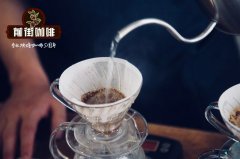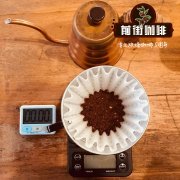Vietnamese coffee introduces which brand of Vietnamese coffee is better? how about Vietnamese coffee?

Professional coffee knowledge exchange more coffee bean information please follow the coffee workshop (Wechat official account cafe_style)
Merkanta is pleased to be the first, if not the only professional coffee importer to provide high-quality, professional micro-batches from Vietnam. Starting in 2015, this is a new starting point for us, and we are proud to be able to invest in sustainable growth and pricing premium Arabica coffee beans in a region with great potential for the future.
All the Vietnamese coffee producers we offer have received extensive training to improve all aspects of their production, from planting to business practices. All data on planting are regularly entered into the Farmers' Field Manual and regularly reviewed and discussed by field consultants and experts. At the end of the year, the data are analyzed and fed back to each farmer in the farmer field school to enable producers to more accurately complete the cost-benefit analysis, better understand and implement the necessary steps, and continue to increase their yields. This extremely rigorous training and production method (almost unheard of in other parts of the country) has created a different kind of coffee that heralds great things from this place of origin.
Coffee was introduced to Vietnam in the 19th century, and Arabica coffee was actually grown in plantations owned by many French throughout the French colonial period. Still, Vietnam has been slow to become a coffee producer due to a variety of political and economic factors, including a massive civil war and a subsequent Communist ban on private land ownership. As of 1990, Vietnam accounted for only 1% of the world coffee trade.
All this has changed, by 1990, from the highest point in Viet Nam to the current second local coffee-producing country (Brazil)-with substantial investment in coffee production possible, land ownership in much the same liberalization reforms in the mid-1980s and World Bank / International Monetary Fund (IMF) policy recommendations to encourage farmers to produce coffee exports. However, China's rapid economic growth leaves little room for high-quality coffee. About 95% of the country's coffee is robusta coffee. Although Arabica coffee production has been increasing in recent years due to the expansion of planting area and the increase in production, it still accounts for a small proportion of Vietnam's total coffee production.
Coffee production in Vietnam is concentrated in the central highlands (80%), and almost all of the Arabica coffee beans grown in the country come from Lindong province in the north of the province. The topography here is largely called "Bashan Red Land" (red basalt soil) by locals, which provides perfect conditions for growing coffee. This rich volcanic mountain soil, coupled with the elevation of the highlands, makes coffee cherries grow slowly, even slowly, and eventually, coffee becomes sweeter and better.
Given Viet Nam's economic development as a large supplier of commodity-grade coffee, there is little traditional demand for traceable coffee. However, Merkanta's partners have made a clear commitment to continue their efforts to achieve excellence in the region and provide great potential for the future.
END
Important Notice :
前街咖啡 FrontStreet Coffee has moved to new addredd:
FrontStreet Coffee Address: 315,Donghua East Road,GuangZhou
Tel:020 38364473
- Prev

El Salvador Santa Maria Coffee House
Finca La Reforma and Finca Santa Maria were founded by Rafael Alvarez Lalinde in 1892 on the fertile and wet slopes of Santa Ana volcano. Don Rafael immigrated from Colombia with some of the best coffee seeds.
- Next

Ethiopia's best coffee brand-honey treated Yerga sherry red cherry sour round strawberry flavor
Professional coffee knowledge exchange More coffee bean information Please pay attention to coffee workshop (Weixin Official Accounts cafe_style) Front Street-Yejia Shefei-Red Honey Red Cherry Introduction Located in Yejia Shefu producing area in southwest Ethiopia, Africa, unique planting environment and micro-climate, breeding world-famous high-quality coffee, local aborigines modestly and pragmatically clean coffee by traditional washing method
Related
- Beginners will see the "Coffee pull flower" guide!
- What is the difference between ice blog purified milk and ordinary milk coffee?
- Why is the Philippines the largest producer of crops in Liberia?
- For coffee extraction, should the fine powder be retained?
- How does extracted espresso fill pressed powder? How much strength does it take to press the powder?
- How to make jasmine cold extract coffee? Is the jasmine + latte good?
- Will this little toy really make the coffee taste better? How does Lily Drip affect coffee extraction?
- Will the action of slapping the filter cup also affect coffee extraction?
- What's the difference between powder-to-water ratio and powder-to-liquid ratio?
- What is the Ethiopian local species? What does it have to do with Heirloom native species?

